By Cowan Brew
In the summer of 1916, America was an island of peace in an ocean of war. The guns of August 1914 had been blazing away in Europe for nearly two years now, primed by a booming American munitions industry that found itself growing rich on the long-distance suffering of others. In the blood-soaked trenches of the Western Front, men blew each other up by the tens of thousands with bombs made in large part from materials supplied by American factories, shipped overseas from American ports. By far the most important of these ports was New York City, whose famous harbor, presided over by the Statue of Liberty, was ringed with warehouses, railroad terminals, docks and piers. Of the estimated $3 billion worth of war materiels bought annually by the allied nations of England, France, and Russia, the lion’s share passed through the port of New York.
Imperial Germany, whose own ports were sealed shut by the mighty British Navy, could do little to officially stem the tide. Diplomatic protests by German Ambassador Count Johann von Bernstorff fell on deaf ears. President Woodrow Wilson, himself a committed Anglophile, responded blithely that America was a neutral country, free to sell her goods to anyone. The Germans could spend their money as well as the Allies, if they chose—of course, how they would get their goods safely across an Atlantic Ocean ruled by battleships sporting the Union Jack was entirely their problem.
A $150 Million War Chest
The Germans responded to Wilson’s rebuff with typical Teutonic industry. While Von Bernstorff continued his public protests, behind the scenes his consular staff set into motion a series of events that would culminate one late-July night in 1916 in the most spectacular act of domestic sabotage ever seen on American soil. Armed with a whopping $150 million war chest, Von Bernstorff’s staff spent freely, if ineffectively, to promote pro-German sentiment inside the United States. With 4 million native-born German-Americans, and another 2.5 million German immigrants living within her borders, Kaiser Wilhelm’s government might well have counted on a massive fifth column of Imperial supporters. American patriotism however, had been sown deep into the hearts of her Germanic citizens, cemented by the fires of civil war, when German-dominated St. Louis singlehandedly kept Missouri out of the Confederacy and thousands of German-speaking immigrants swelled Union Army rosters across the North. Whatever their personal feelings about the war in Europe, German-Americans as a group were scrupulously neutral, if only to avoid the appearance of pro-German leanings.
Taking Matters Into Their Own Hands
Shut off from support by their ancestral relatives, the staff at the German consulate in Washington resolved to take matters into their own hands. In February 1915, the German General Staff gave its U-boats free rein to sink any vessels, even those flying neutral colors, that violated its self-declared zone of exclusion around Great Britain. The announcement was made in public, and the German government actually took steps of printing warnings in major American newspapers, cautioning anyone against taking such ships. Less publicly, the General Staff also ordered its military attache in Washington, Captain Franz von Papen, to commence sabotage operations against “every kind of factory for supplying munitions of war.” Von Papen had little experience in clandestine operations, but he was soon joined by another German captain, Franz von Rintelen, who was well-schooled in such work. Von Rintelen arrived in America carrying a Swiss passport and immediately set up business in New York City. He quickly proved more energetic and imaginative than Von Papen, spending his time monitoring Allied shipping and enlisting sailors from some of the 80-odd German ships currently stranded in New York harbor to help him snoop around the docks. At the same time, Von Rintelen set up a bomb-making factory inside one of the ship’s workshops and persuaded a German-born chemist in nearby New Jersey to make pencil-shaped firebombs. Anti-British Irish dockworkers assisted the Germans by planting the firebombs on Allied ships, and a rash of mysterious fires at sea soon afflicted ships carrying American munitions abroad. It was later estimated that Von Rintelen’s “pencil bombs” had caused $10 million worth of damages to 36 ships at sea.
The Sinking of the Lusitania Makes Matters Worse
Von Rintelen’s efforts were seriously curtailed following the sinking of the British liner Lusitania off the coast of Ireland in May 1915. The sinking of an apparent non-combatant ship (although recent research has suggested that Lusitania was carrying a secret stash of explosives in her hold) inflamed public opinion in the United States, 128 of whose citizens had gone down with the ship. With no national intelligence service yet in existence, President Wilson detailed the Secret Service to begin watching German diplomats. Somehow, Von Rintelen escaped their notice, but commercial attache Herman Albert did not. In July 1915, Secret Service agents managed to filch Albert’s briefcase on a crowded New York elevated train. Inside were detailed plans for future sabotage projects, including the placing of more firebombs on Allied ships and the wrecking of the Welland Canal near Niagara Falls. Albert, Von Papen, and several of their colleagues at the German consulate were immediately deported. Von Bernstorff, with diplomatic immunity, was untouchable; but Von Rintelen was taken off a Dutch steamer by British seamen while fleeing to Berlin. The saboteur leader attempted to brazen his way out of captivity by showing his spurious Swiss passport, but soon admitted that he was, in reality, a German officer.
Stopping the “Dark Invader” Too Late
Unfortunately, Von Rintelen’s arrest would come too late to prevent his masterstroke from reaching fruition. “The Dark Invader,” as he melodramatically styled himself, had already taken a walk along the New Jersey waterfront one afternoon and noticed the intense activity taking place at a mile-long pier jutting out from Jersey City into the Hudson River, just opposite the Statue of Liberty. The pier was called Black Tom Pier after the small speck of land on which it was built, Black Tom Island (named after a dark-skinned fisherman who was once its only inhabitant). The original island had long since disappeared, filled in by a teeming mass of warehouses and railroad tracks marking the terminal of the Lehigh Valley Railroad Company. The LVRC shared space with the National Dock and Storage Company, a major player in the collection and transfer of gunpowder, TNT and artillery shells bound for Europe. “What an ideal pier to destroy,” Von Rietelen remembered thinking at the time.
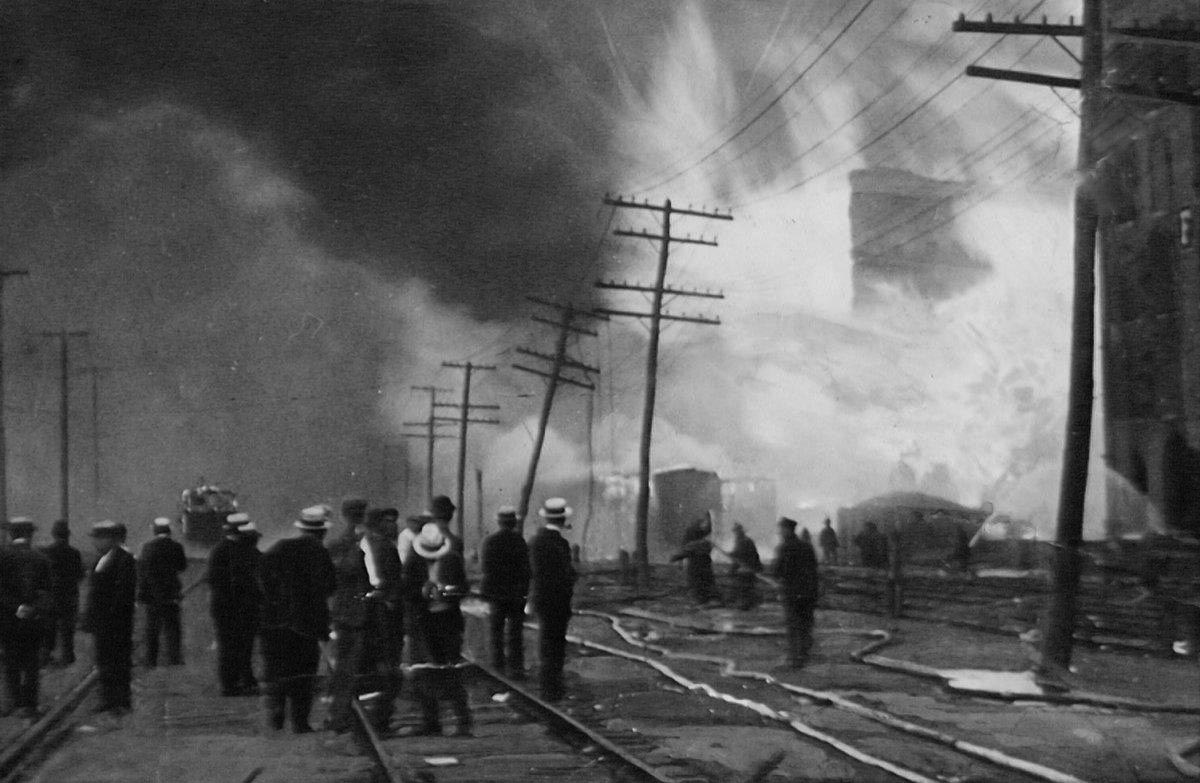
With their ringleader now in custody, the actual plot to blow up Black Tom Pier fell to a shadowy group of co-conspirators. Kurt Jahnke and Lothar Witzke, experienced saboteurs brought east by Von Rintelen from San Francisco, took the lead, assisted by an ever-changing roster of accomplices known inclusively as “the Hoboken bunch.” Included in the group were Paul Hilken, a naturalized American who functioned as paymaster for the gang; Max Hinch, also known as Graentnor, and a somewhat simple-minded Czechoslovakian immigrant named Michael Kristoff, who lived with a distant relative in a Bayonne boardinghouse and worked at the Tidewater Oil Plant near Black Tom Pier.
Working out of their headquarters in a four-story brownstone on 15th Street in New York City, a scant few miles from Black Tom Pier, the saboteurs painstakingly perfected their plot. It took them over a year. Black Tom was just one of several inviting targets for the Germans. A shell-packing plant in nearby Kingsland, N.J., and the Hercules Powder Company in Eddystone, Pa., were also singled out for destruction, along with at least 40 other American munitions factories.
Thanks to the revelations from Albert’s briefcase and Von Rintelen’s capture, federal authorities were well aware of the potential threat posed by German infiltrators, but the lack of a central investigative unit greatly hampered efforts to block domestic sabotage. The New York Police Department’s Bomb Squad, looking into the rash of firebombings on Allied ships, spearheaded the initial investigation. Several German-speaking detectives haunted dockside taverns and eavesdropped on German sailors’ unguarded conversations. The efforts paid off in early 1916, when dozens of suspected saboteurs were rounded up in New York and New Jersey, effectively halting the ship-bombing campaign.
As a consequence of the NYPD’s undercover successes, the Germans switched their targets from ship to shore. Black Tom Pier moved to the top of the list. On the night of July 29-30, a Saturday, Jahnke and Witzke silently rowed across the Hudson River and tied up at one of the piers on Black Tom Island. Meanwhile, Kristoff ambled onto the pier from the land side through the labyrinith of ill-lit warehouses, boxcars, and barges. It was unseasonably cool that night, but swarms of mosquitoes still droned through the darkness. The handful of guards stationed on the pier, in defiance of company regulations, had lit smudge pots against the flying insects and huddled around them for protection. Whether or not some of these guards had also been bribed to look the other way has never been firmly established, although subsequent investigations alleged this to be the case.
In any event, security on the pier was amazingly lax, even by peacetime standards. To make matters worse, federal regulations limiting the storage of munitions to 24 hours and banning the storage of TNT for any time were being ignored over the weekend. Also violating safety standards was the barge Johnson No. 17, which was moored to the pier, its deck groaning with 100,000 pounds of TNT and 417 cases of detonating fuses—in essence a giant timebomb waiting to explode. Counting the warehouses, barges, and railroad cars parked for the weekend along the sidings, the terminal held anywhere from 2 to 4 million tons of high explosives. Either through careful planning or sheer good luck, the saboteurs could not have picked a better night to strike.
Working quickly, Jahnke, Witzke and Kristoff moved through the shadows, setting small fires and time-delayed explosives here and there among the freight cars and on the Johnson’s deck. No one saw them. Then Kristoff casually walked away, heading back to his boardinghouse, and Jahnke and Witzke climbed into their rowboat and began rowing back toward Manhattan across the Hudson. It was shortly after 12:30 on Sunday morning, and all hell was about to break loose.
A railroad bull named Barton Scott claimed to have seen the first flicker of flames in the center of a line of cars near the end of the pier. Scott ran to a telephone to call for help. About the same time, another tendril of fire was spotted snaking across the Johnson’s deck. Precious minutes were lost before anyone thought to call in an alarm to the Jersey City Fire Department. By the time the first firemen arrived on the scene, small-caliber shells and shrapnel had already started exploding in the boxcars, sending jagged pieces of metal whirring through the air. Firemen, police, and frantic dock workers—many of whom had wives and children living on barges berthed nearby—leaped and dodged from fire to fire, attempting to snuff out the flames. Meanwhile, the LVRC tugboat Geneva bravely hooked onto two of the smoking barges and attempted to pull them away from the pier. One was the doomed Johnson No. 17.
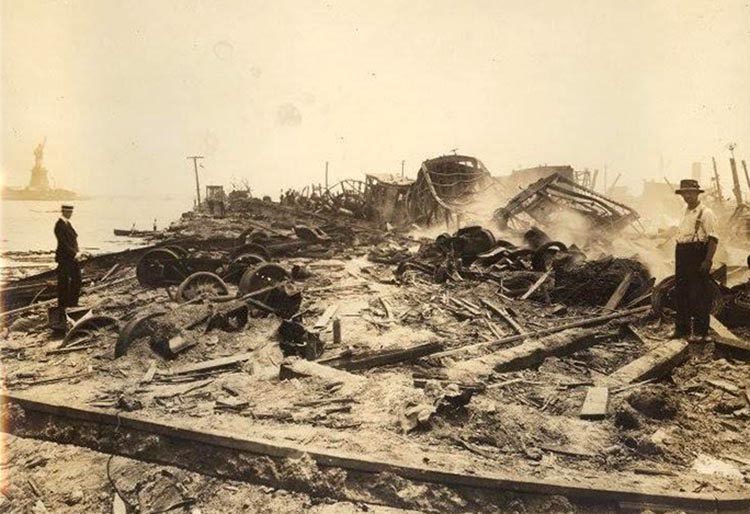
It was too late. The tugboat and its burden had only struggled a few feet away from the pier when, as the New York Times reported the next day, the Johnson was “blown to pieces in a great explosion which shook buildings fifteen miles away.” No one who was there that night ever forgot the first explosion, which came at exactly 2:08 am (The time was literally etched in stone when a chunk of metal struck the clocktower of the Jersey City Journal, stopping the clock dead in its tracks.) The thunderous blast shook thousands of sleepers from their beds in New York City and across the bay in New Jersey. One of those sleepers, 10-week-old infant Arthur Tosson of Jersey City, was thrown from his crib and killed. As far away as Philadelphia, 90 miles to the south, people were turning to each other and asking, “What was that?” In the middle of the Hudson River, saboteurs Jahnke and Witzke were nearly swamped by the waves created by the blast.
On both sides of the river, residents stumbled to their windows or out into the streets to see what had happened. The sky above them looked like the world’s largest Fourth of July celebration. An orange-red glow seeped through a thick mantle of black smoke, while sparkling trailers of shrapnel crisscrossed the horizon. Broken glass from thousands of shattered windows littered the streets. The Brooklyn Bridge trembled and shook on its moorings. Late-night revelers coming out of New York nightclubs were knocked off their feet. A second giant blast, from the black-powder-packed railroad cars, boomed through the darkness, creating even more panic in the streets. Meanwhile, in New York harbor, tugboats, fireboats, and Coast Guard clippers raced back and forth in the choppy water, attempting to evacuate shoreside residents and pull explosive-packed barges away from the pier. It looked, someone said, like “an American Verdun.”
Pandemonium reigned. On Bedloe’s Island, 650 yards away from Black Tom Island, the Statue of Liberty stood tall against the deluge. Shrapel pinged off her copper skin, rivets popped loose from their fittings. A police launch labored through the water to evacuate the 25 women and children living on the post Governor’s Island. At nearby Ellis Island, hundreds of recently arrived European immigrants, who thought they had escaped the ravages of war, screamed in terror as shrapnel and shell fragments rained down on the roof of the Immigration Station, collapsing part of the ceiling in the Great Hall. The immigrants were shuttled to the comparative safety of the Battery on Manhattan Island. Ninety mentally ill patients from the Ellis Island mental hospital were led away as well, whimpering and moaning in the chilly night air.
In the new light of day, the extent of the damage was revealed to all. Black Tom Island was a smoking ruin. Fires still smoldered amid the twisted heaps of rubble that hours before had been munitions-packed warehouses, train cars and docks. Sporadic explosions continued all morning. At one end of the terminal, a 300-foot crater marked the spot where dynamite-laden boxcars had exploded. In the harbor, debris from the blast floated amid the tugboats, barges and rescue vessels. Industrious urchins picked up unexploded shells that floated ashore, selling them for 50 cents apiece to the morbidly curious. Manhattan junk dealers commandeered boats to pick through the wreckage.
Amazingly, there were few fatalities from the explosions. Besides the Tosson infant, the immediate toll included an unidentified body found on the pier, believed to be that of a missing night watchman; two other bodies recovered from the water, and Jersey City fireman James Doherty, who died the next day from injuries suffered while fighting the blaze. The body of Lehigh Valley Police Chief Cornelius Leyden washed ashore a month later, and the body of the captain of the ill-fated barge Johnson No. 17 washed up on Bedloe’s Island three months later. The death toll would have been much higher if the explosion had occurred during a weekday, when the harbor and shore would have been filled with people.
Damage estimates ran into the millions of dollars. The National Dock and Storage Company reported losses of some $12 million; Lehigh Valley Railroad listed losses of $1 million in rolling stock, tracks and property, and another $5 million in lost munitions stored in freight cars and barges. In Manhattan, Jersey City and the surrounding towns, over $1 million was spent replacing broken windows.
The German saboteurs escaped scot-free. Michael Kristoff was temporarily arrested after his suspicious landlady reported him to Jersey City authorities, but he was released a few days later after being deemed “insane but harmless.” Perhaps to escape further attention, Kristoff enlisted in the United States Army, served through the war, and resurfaced in Albany, N.Y., where he was arrested for theft. He died in 1928. An enigma to the last, Kristoff’s body was later exhumed from a pauper’s grave on Staten Island, where it was discovered that his dental records did not match the corpse’s teeth. No explanation for the discrepancy was ever provided. Jahnke, Witzke and the others simply melted away, helped by the predictable bureaucratic confusion surrounding the incident and by America’s incipient entry into World War I. The Black Tom disaster was labeled a simple, if enormous, accident.
Lawsuits filed by various plaintiffs seeking to recover damages dragged on for years through the courts (the largest suit was filed by the Russian government, which owned most of the munitions that went up in smoke on the night of July 29-30). After the war, the United States and Germany set up a Mixed Claims Commission to rule on some 20,000 damage claims stemming from alleged terrorist incidents prior to America’s entrance into the war in April 1917. Commission investigators combed the world looking for evidence of German involvement in the incidents at Black Tom Island, Kingsland, N.J., and other sites of suspicious explosions and fires. Lothar Witzke was tracked down in South America where, safely beyond the reach of criminal prosecution, he freely admitted that he had done “the work in New Jersey with Jahnke when the munitions barges were blown up and the pier wrecked.”
Armed with Witzke’s admission, U.S. investigators laid out a case for official German involvement in the Black Tom case. After years of suits and countersuits, the commission finally ruled in 1939 that Germany was guilty of such involvement, and awarded $50 million in damages to the various claimants. By then, Germany was controlled by an even worse tyrant than Kaiser Wilhelm, and Adolf Hitler had no intentions of paying for any damages incurred by the previous government in its wartime efforts to defend itself. Not until 1953, eight years after World War II, did the newly democratic Republic of Germany finally begin making good on its debts to the victims of Black Tom Island. Payments continued until 1979, more than six decades after the night sky over New York harbor was lit up by explosions from the worst case of domestic terrorism to strike American soil until that unimaginable morning of September 11, 2001.
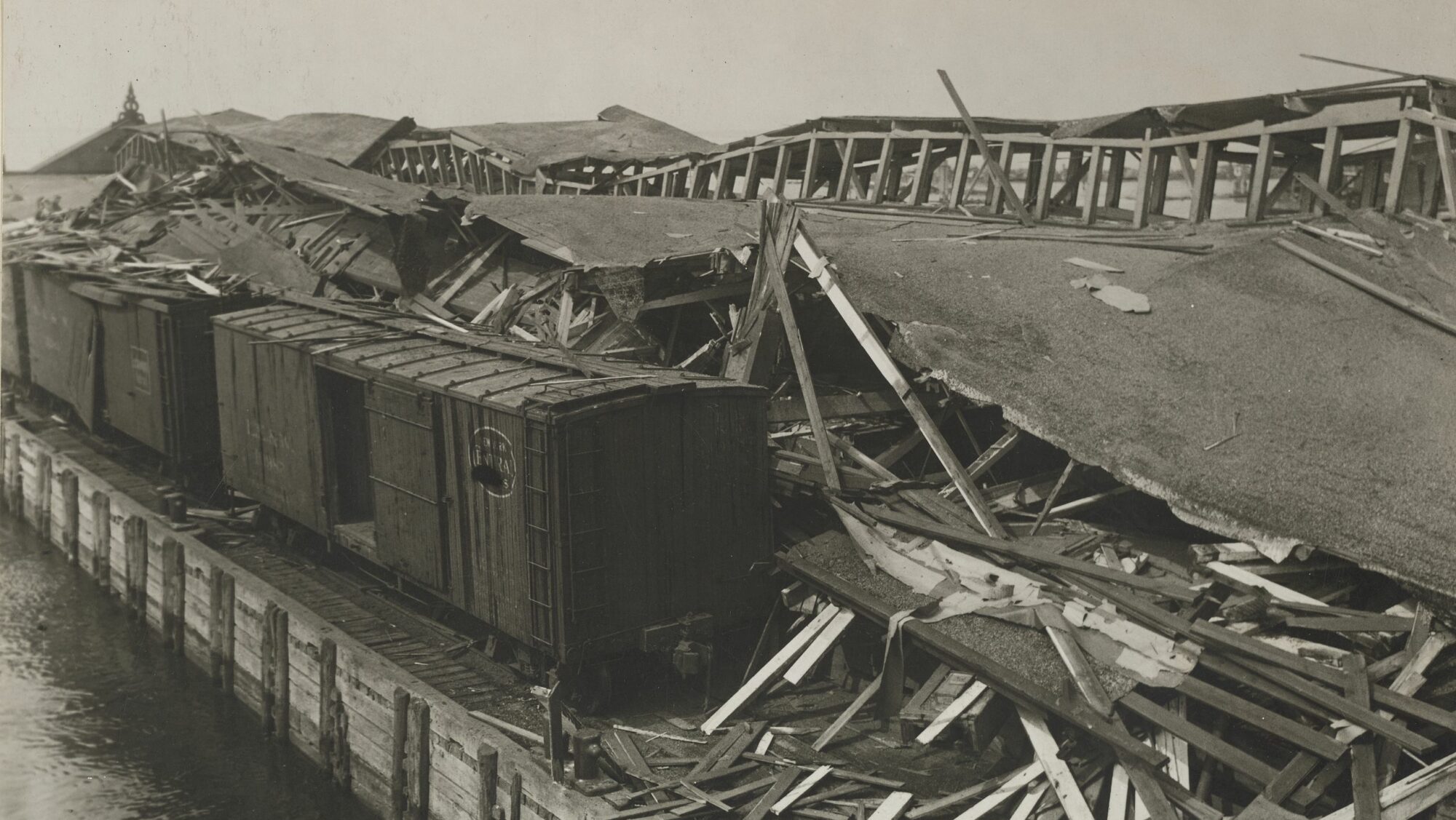
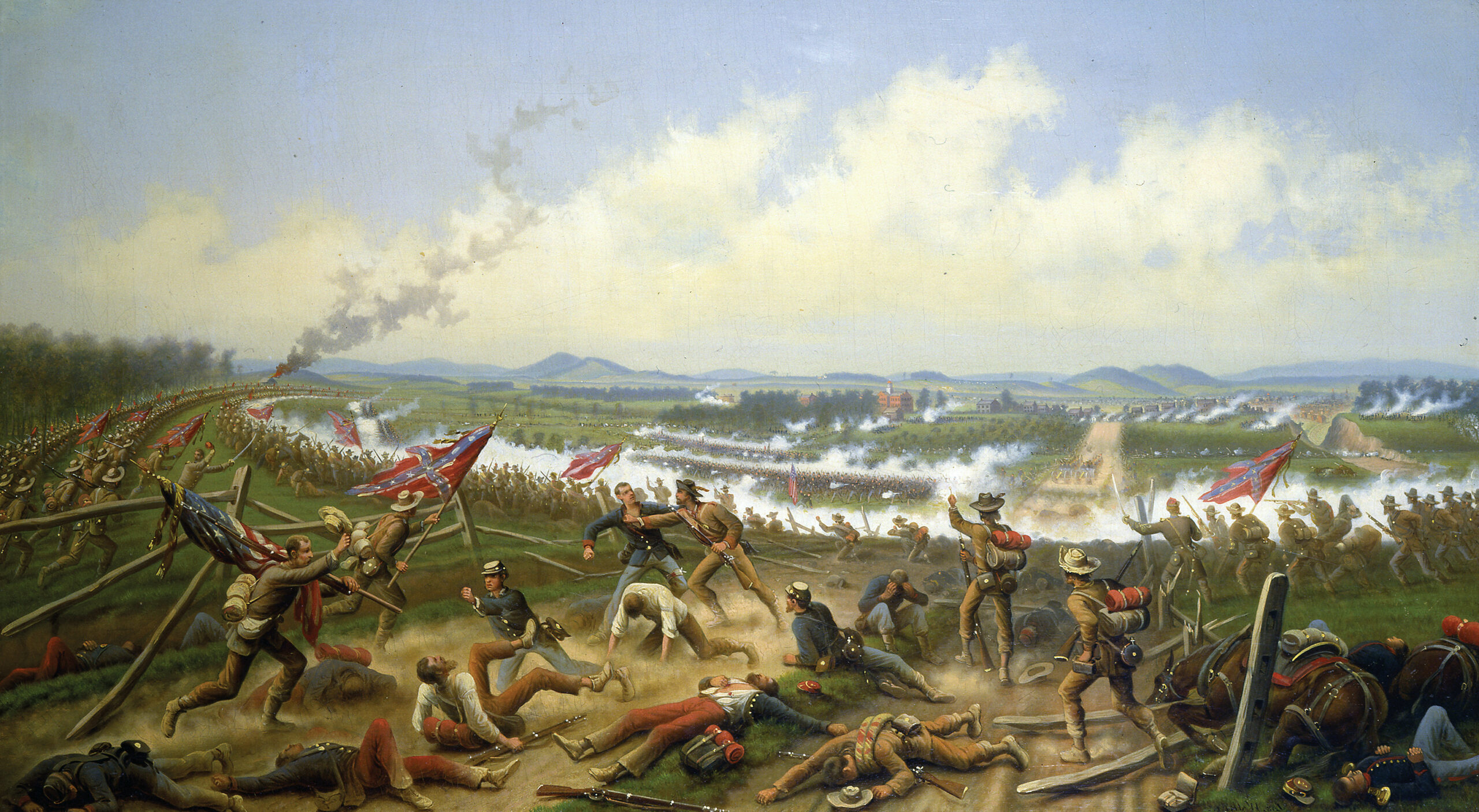

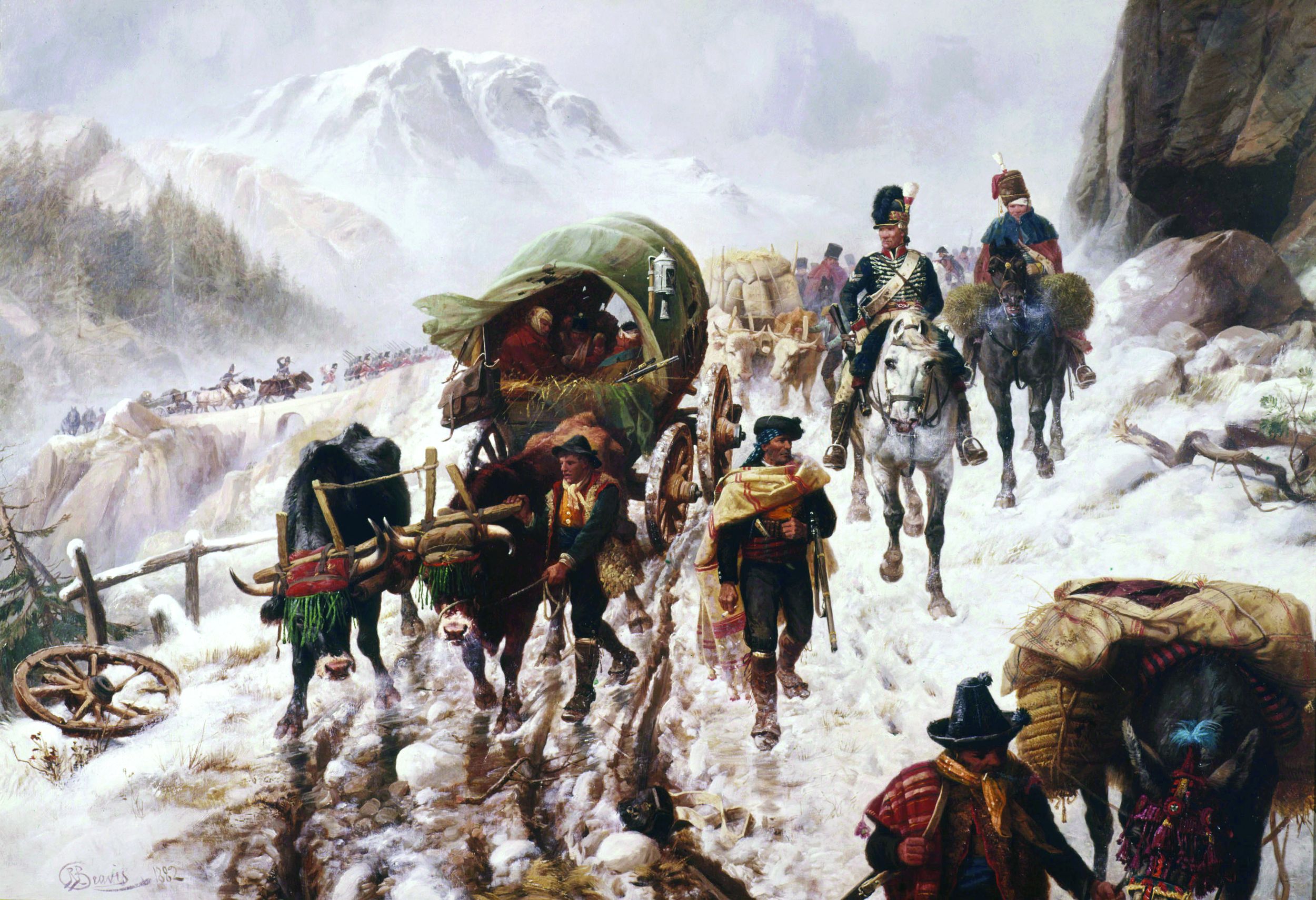
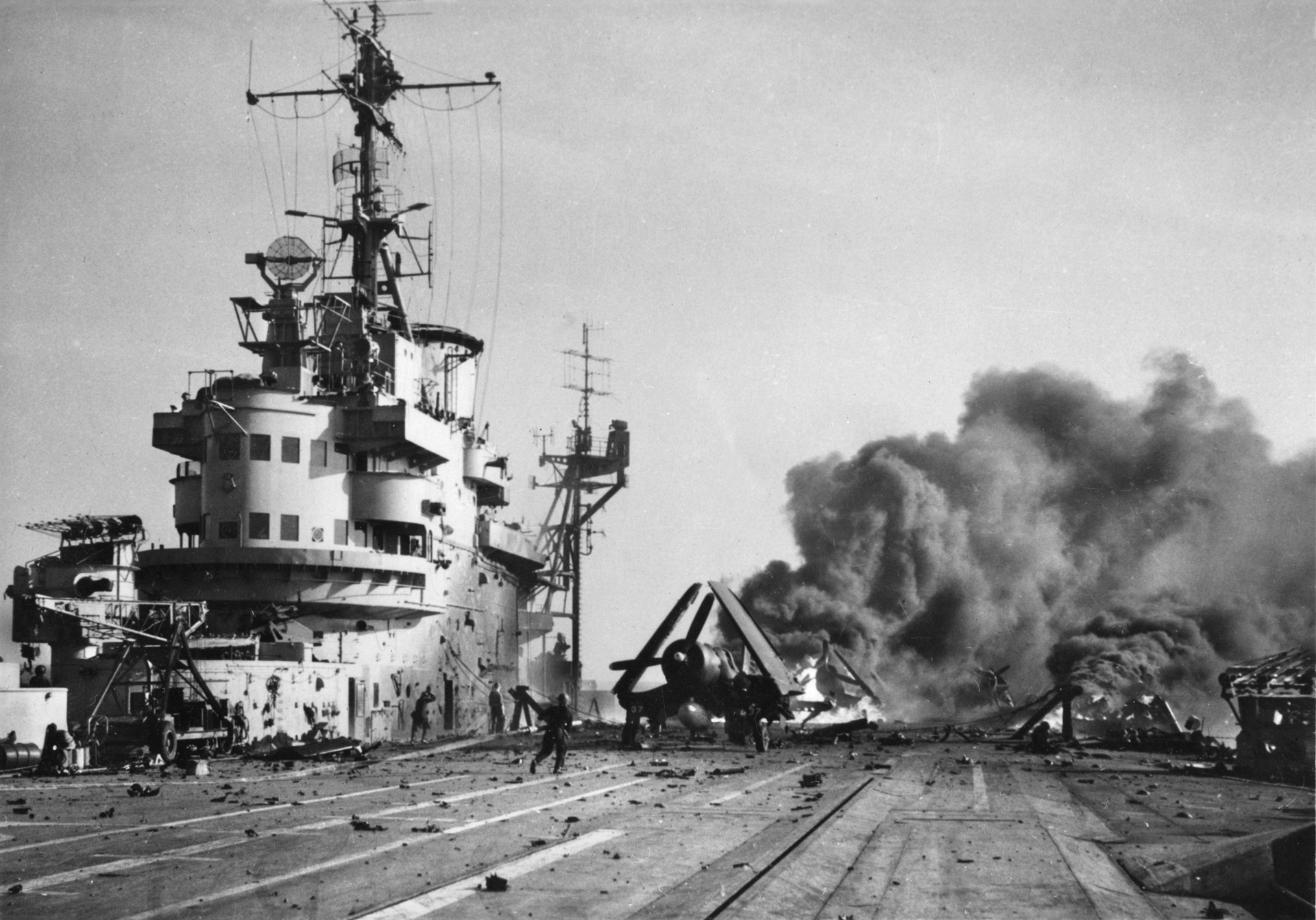
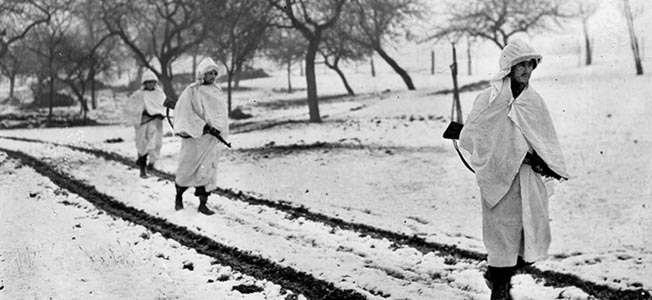

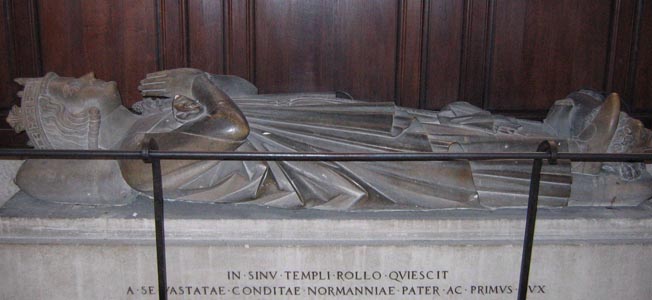
How about the 1864 Condederate fire bombings that could have been much worse? A competent historian would have mentionned them at least. I supect that they were ignored to focus of foreign attacks.
I believe you are referring to the Confederate “spies” operating in Manhattan who attempted to start fires at several hotels in New York City. As Wikipedia suggests, most of these fires failed to start, and the rest were contained and did not do enough damage to cause a panic. And perhaps more to the point, this was an attack during war, not a terrorist attack. But it did happen in NYC.
Actually, this attack took place in Jersey City, not Manhattan.
The first terrorist attack in Manhattan was the donkey and wagon placed in front of the Morgan Bank on Wall Street in 1920, which went off and killed hundreds of people, and the donkey. The cops never found out who caused the chaos, but the Morgan building, to this day, bears the scars of the blast. That was ordered by Jack Morgan (son of J.P.) himself.